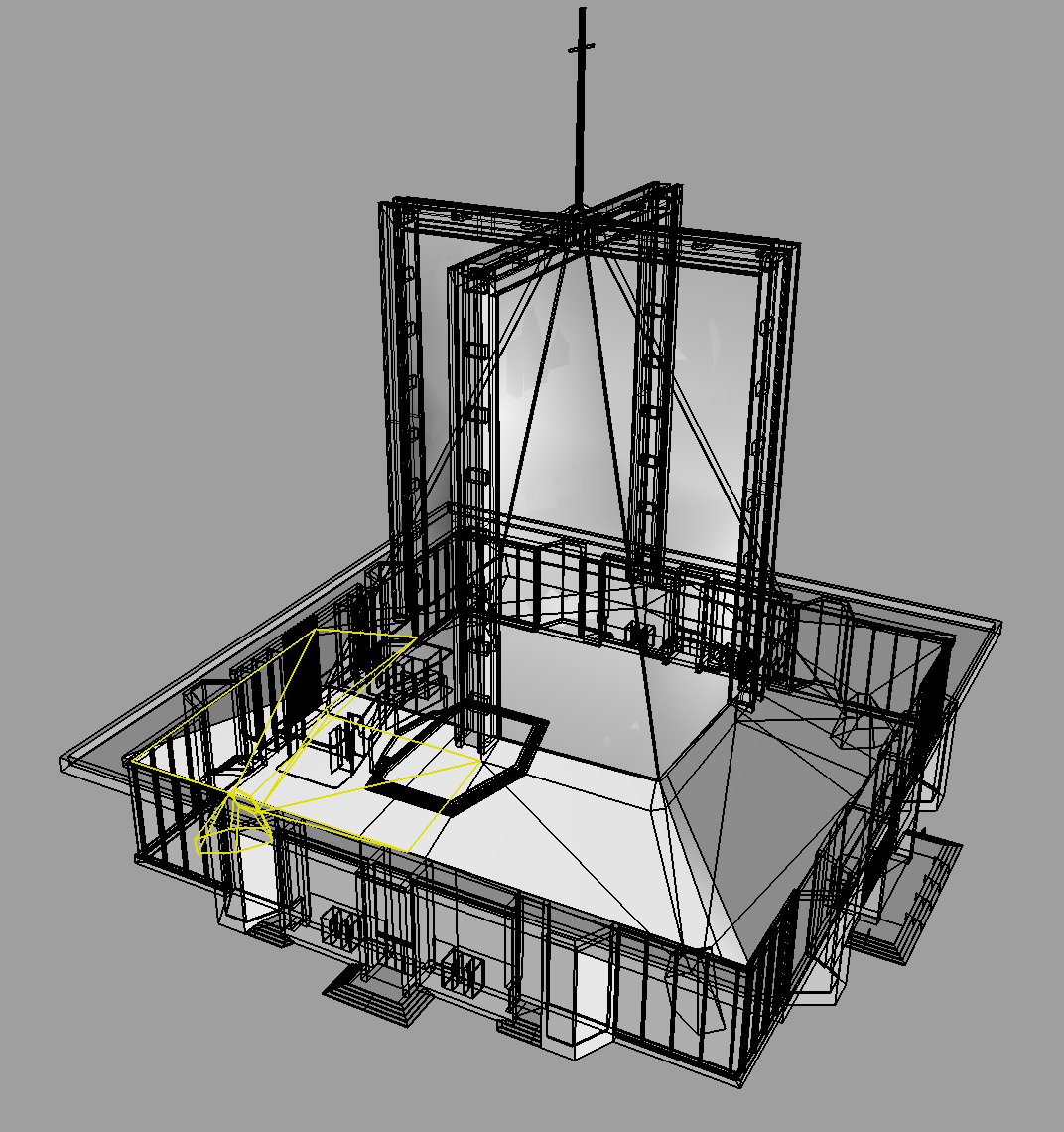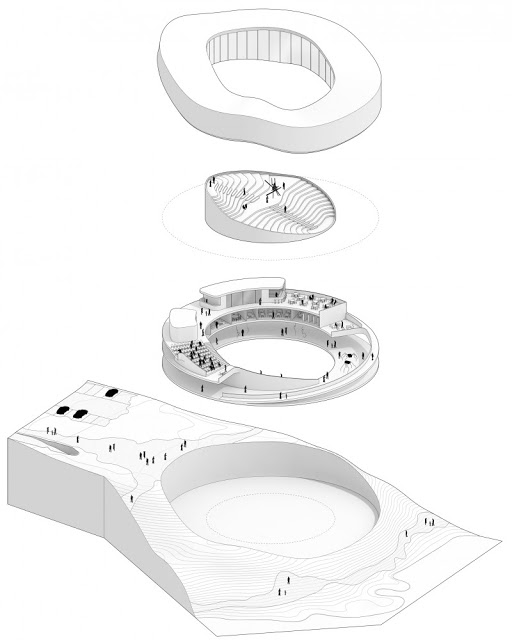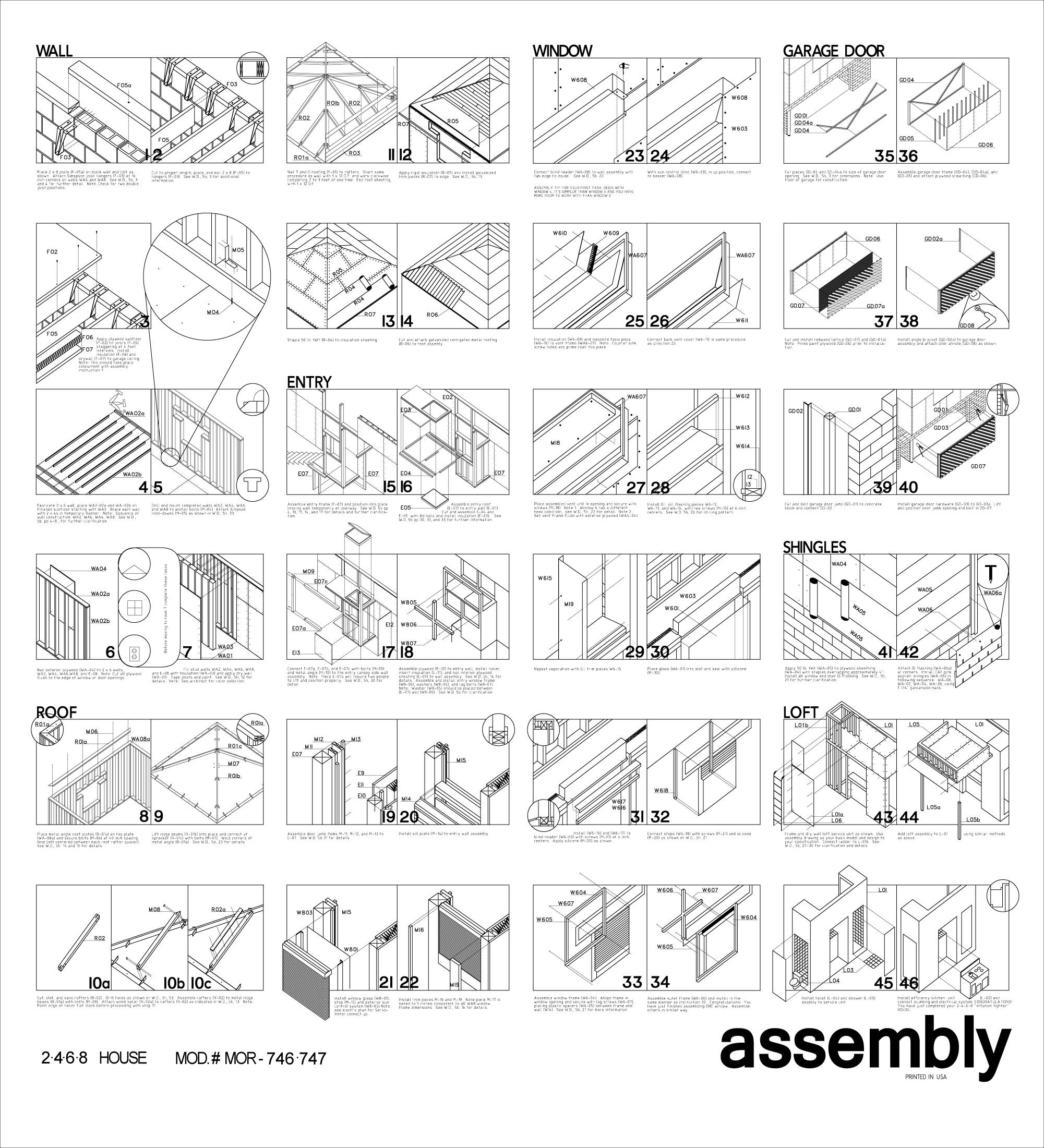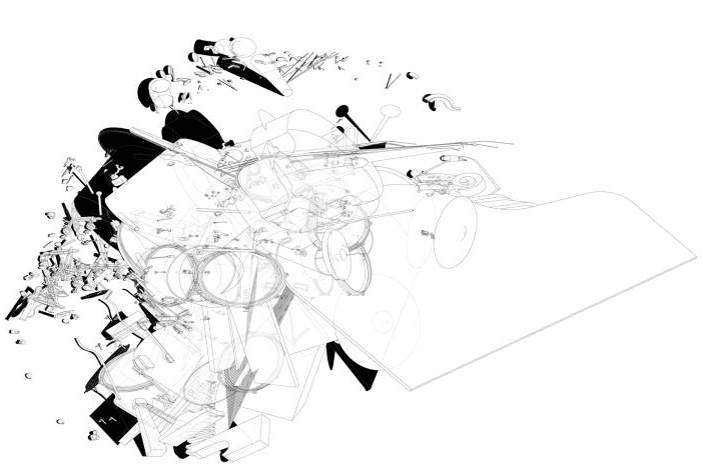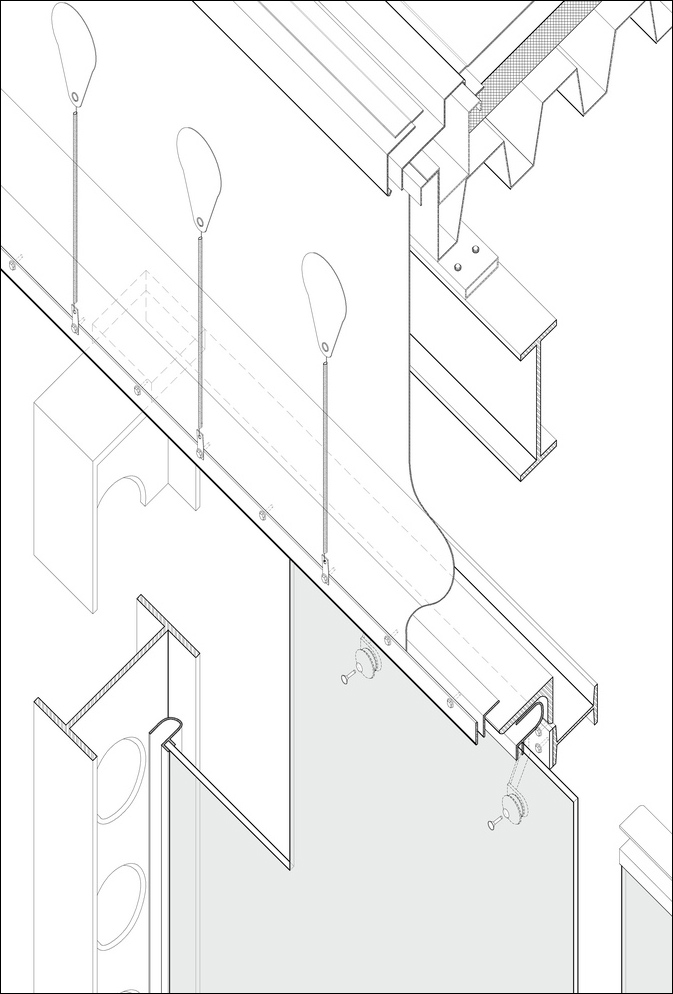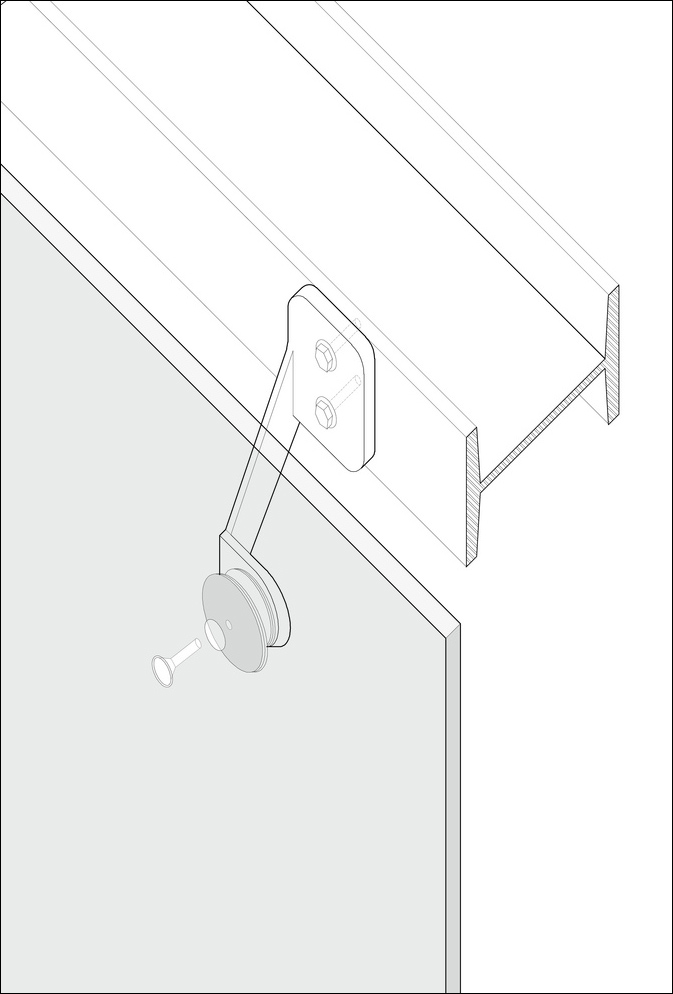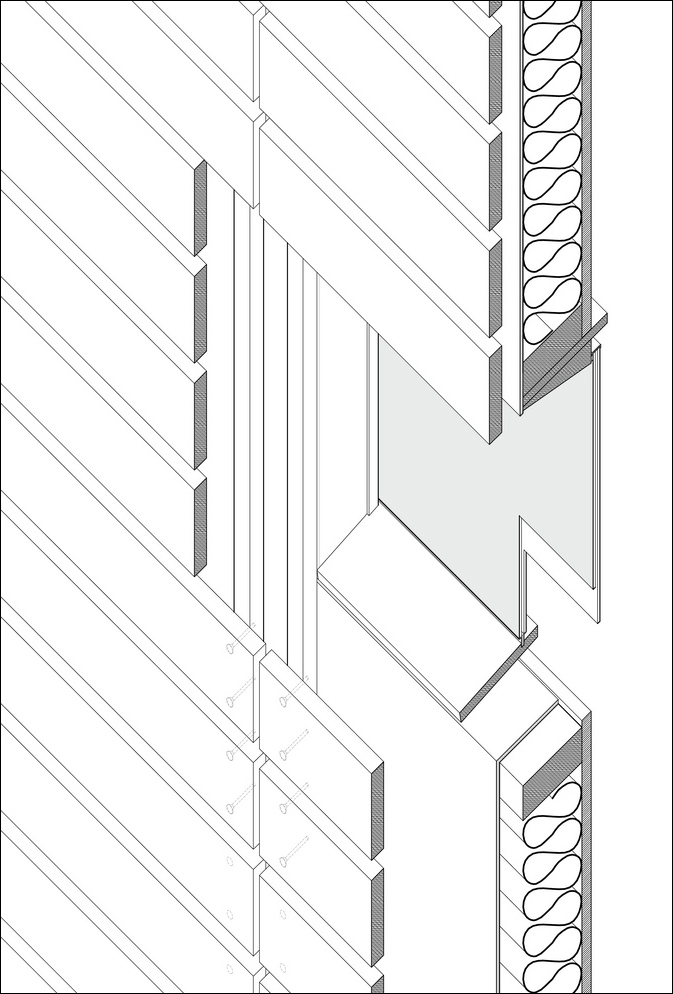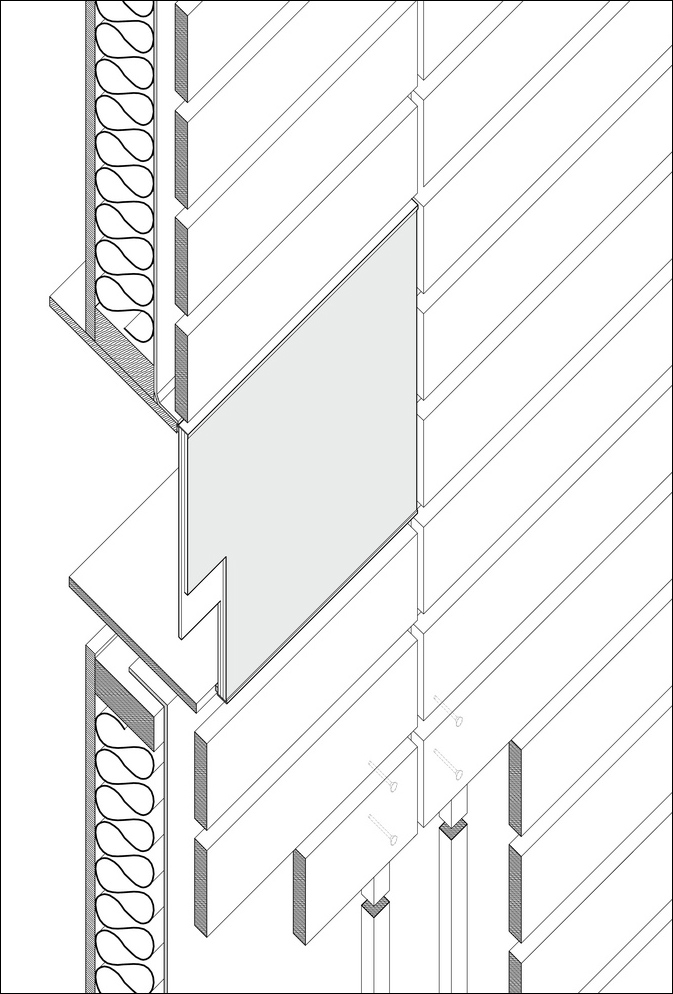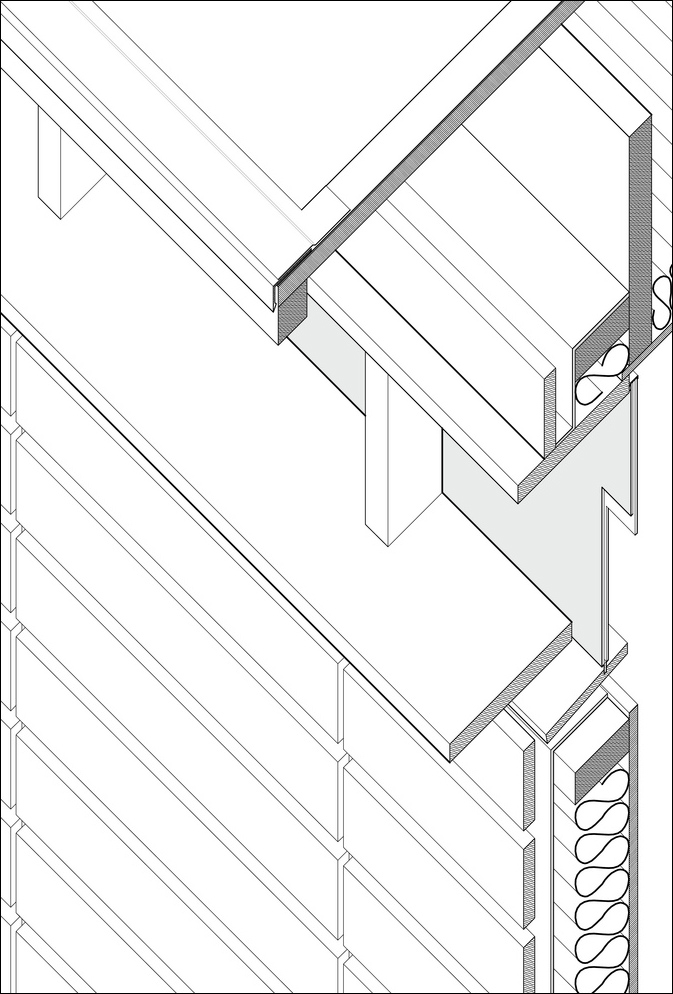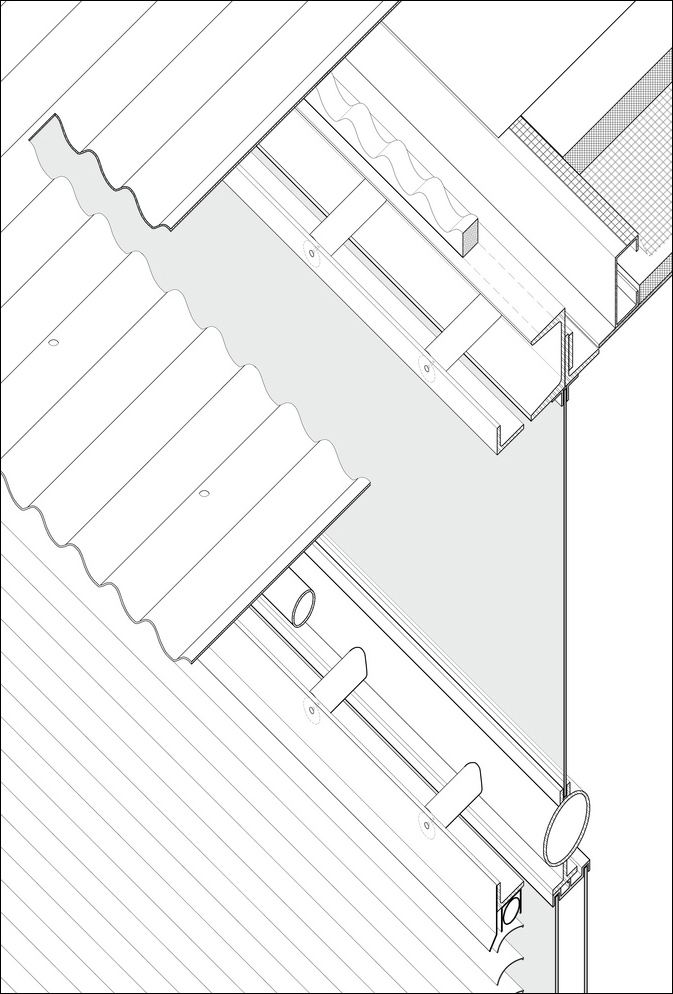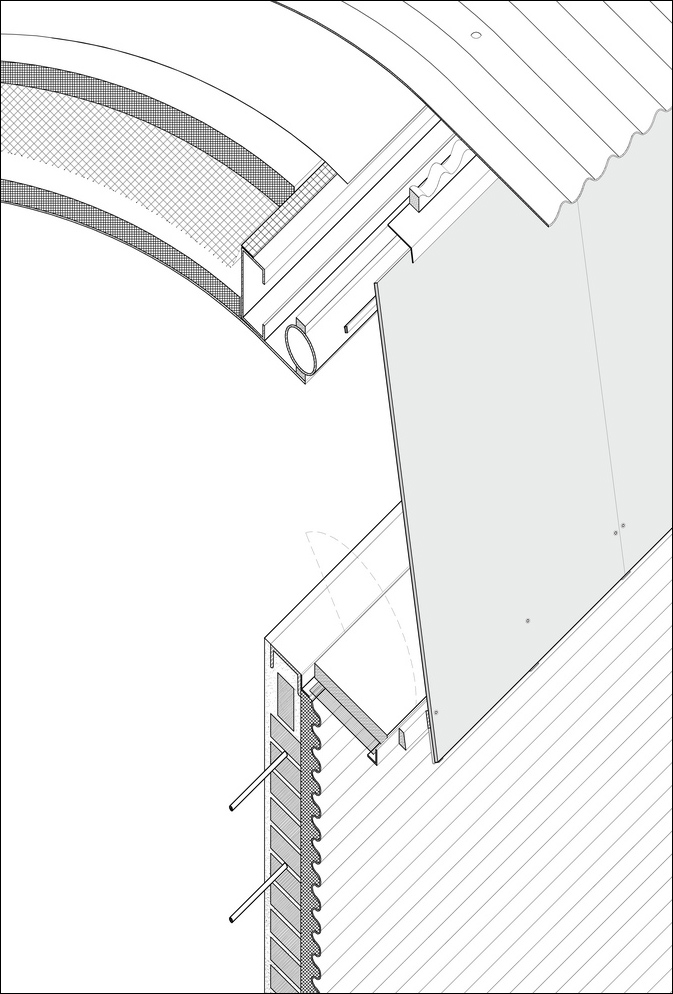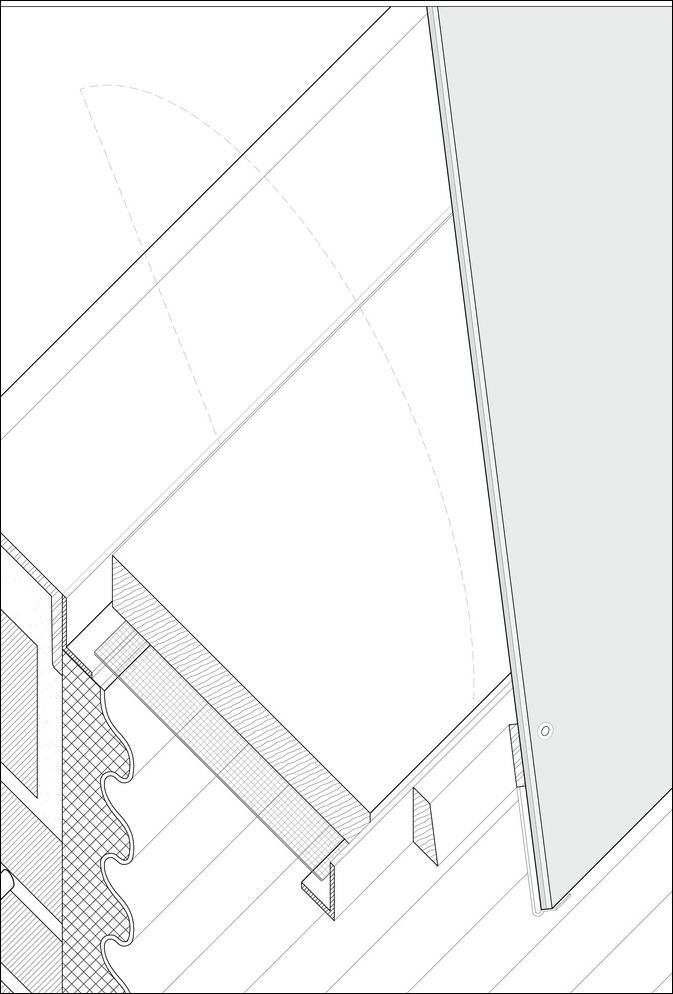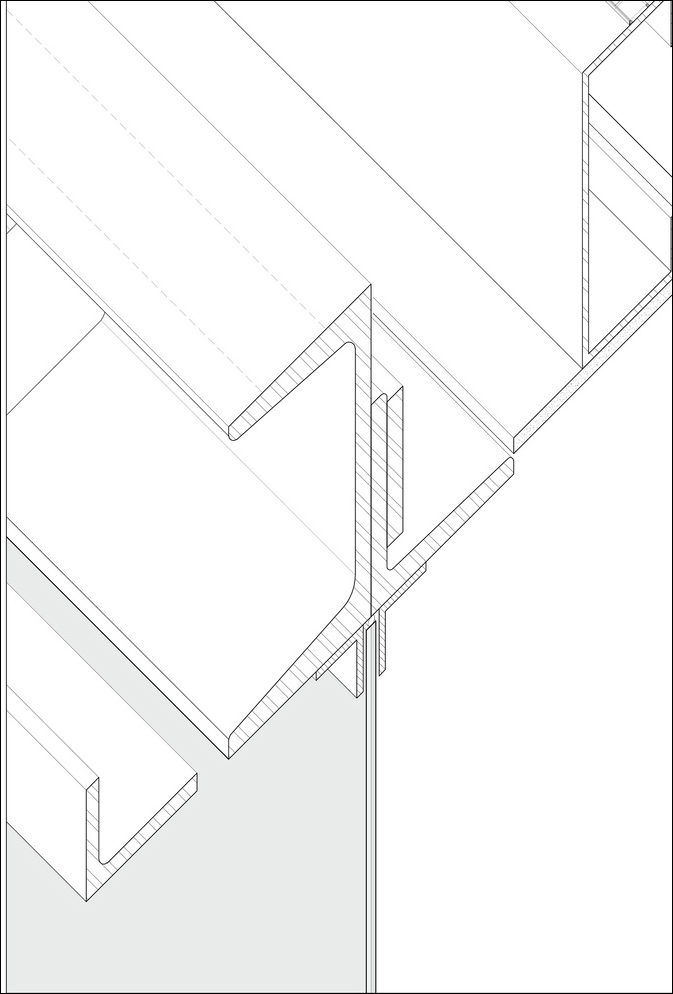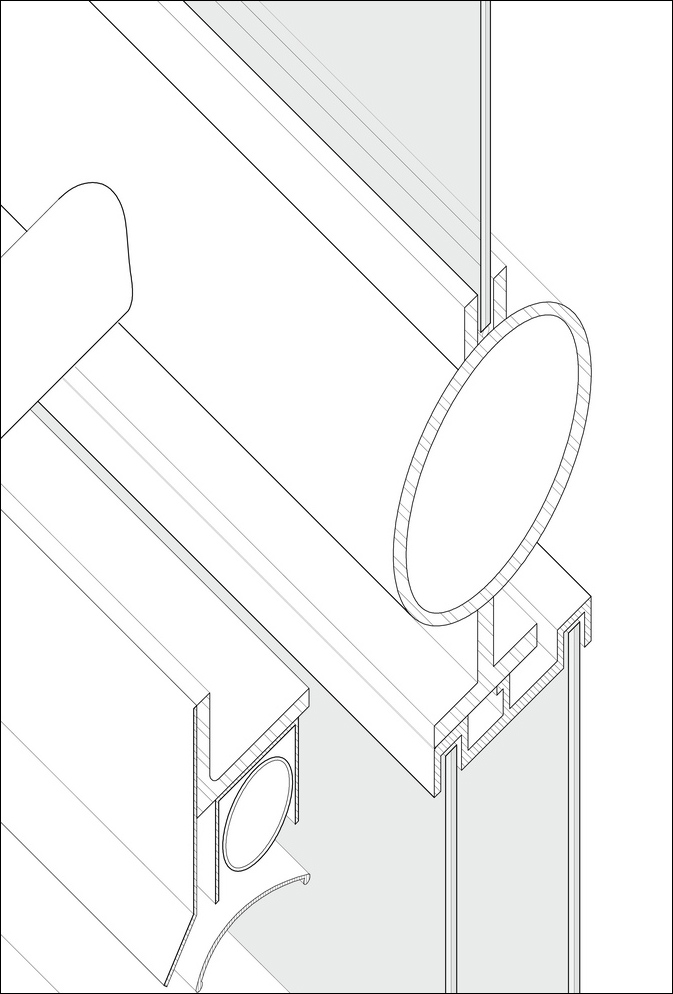|
200c f13 Project 3: Case Study |
|
|---|---|
| Screenshot |

|
| The thesis of this exercise is that there exists a relationship between the constructive system employed in an architectural work at a detail scale, and the spatial and formal language that results at the building scale. This relationship, and the aesthetic ramifications of it, are what is meant by the term "tectonic". | |
| Assessment objectives |
Assessment objectives include:
|
| Exercise Type | Project |
| Evaluation Criteria |
|
| Uses Tool(s) | Tool:Rhino v4.x , Tool:Illustrator CS5 |
| Uses Workflow(s) | |
Method
Research and Documentation
Begin by researching your given case study building. Collect as much information as you can - photographic, drawings at any scale, sketches, renderings - and compile this information into a presentable set of images and drawings. Where appropriate, enlarge drawings to known scales.
Next, scan and trace all relevant drawings into 2d vector line drawings using Rhino or any other appropriate CAD software.
3d Digital Models
The project proceeds through the production of 3d digital models.
Using the 2d digital tracings of the documentation drawings described above, a 3d digital model is to be produced that describes your case-study building. The amount of detail present and the division of labor within the groups of students should be calibrated to producing two categories of digital information:
- A generalized description of the mass, space, and structure of the building as a whole. See 'massing model', below.
- A detailed description of the elements and materiality of a particular building assembly. See 'detail model', below.
Digital Massing Model
The digital massing model for your case study building should display enough detail as to provide the necessary elements for the full-building analytic drawing, described below. At a minimum, it should show:
- the site/context surrounding your building including any relevant changes in ground topography or texture
- the overall shape and configuration of the building massing
- all major punctures, apertures, or doorways
- all major interior spatial divisions
- all major structural elements (including all structural elements visible to the interior occupants).
For examples, see the digital models of St Mary's Cathedral and Christ the Light Cathedral, which display the proper amount of detail required (with the exception of the furniture elements, which are not necessary).
These models should be produced collaboratively , in the groups described below.
Digital Detail Model
The digital detail model for your case study building should describe a selected section of your case study building. Chosen in consultation with your teammates for this exercise, and with your instructor, the area depicted should show a significant tectonic system that plays an important role in the realization and formal expression of the overall building. Select an area that shows at least two of the following conditions:
- How the building meets the ground
- Floor or foundation to wall connection
- Wall to window connection
- Roof or ceiling to wall connection
- Roof to horizontal aperture (skylight) connection
These models should be produced individually, along with the exploded axonometric detail drawing described below.
Presentation Drawings
Each student will produce and display two drawing for review on the date indicated below.
Full-Building Analytical Drawing
An analytical drawing or diagram by definition is an abstraction of the building, as it does not exist as an actual condition. For our purposes, the drawing seeks to reveal the relationships between construction system, spatial organization, and site. Recall the thesis of this exercise is that there exists a relationship between the constructive system employed in an architectural work at a detail scale, and the spatial and formal language that results at the building scale. This relationship, and the aesthetic ramifications of it, are what is meant by the term "tectonic".
At the building scale, the formal and spatial systems which may be influenced by the constructive logic may be, but are not limited to:
- spatial organization
- social organization: collective vs individual
- public/semi-public/private
- duration: temporary vs. permanent
- structural organization: monolithic vs aggregate
Exploded Axon Detail Drawing
A "detail drawing" depicts the particular elements of construction with a high degree of precision. This may include not only the physical elements of the built work, but also their relationship in the sequence of construction, the elements or processes required during their fabrication, and the sequence to which they arrived on the site and found their way to their final configuration.
Schedule
For the 200c Fall 2013 Semester, this project reviewed in class on the following dates:
- Thursday, Oct 10
- Project assigned.
- Tuesday, Oct 15
- Research complete, all source drawings traced in 2d. 3d Massing models complete. Sketches of Full-Building Analytical Drawings completed in class.
- Thursday, Oct 17
- 3d Detail models complete. Sketches of Exploded Axon Detail Drawings completed in class.
- Tuesday, Oct 22
- Review of full-scale (tiled) layout. All drawings due to be turned in by 10pm.
- Wednesday, Oct 23
- Project presented alongside Departure Three.
Case Study Buildings
Wire Folks
Tjibaou Cultural Center, Papua New Guinea
Renzo Piano
Alex Spatzier, Chandni Sheth, Tina Lee
Sendai Mediatheque
Toyo Ito
Xin Xin Nong, Jeremy Shiman, Nancy Mei
Pompidou-Metz, Metz, France
Shigeru Ban
Thomas Murdoch, Kasey Elliott, Spencer Bates
Steilneset Memorial to the Victims of the Finnmark Witchcraft Trials, Vardø Norway
Peter Zumthor
Sean Ostro, Yuxu Han, Jessica Jia Chen
Plaster Folks
Electrical Plant in Columbia
Felipe Gonzalez-Pacheco
Phirak Suon, Rebecca Rusinow, Carlos Martinez-Horta
Phaeno Science Center
Zaha Hadid
Adam Miller, Yan Xin Huang, Iftekhar Mian
Tama Library
Toyo Ito
group one: Wesley Alan Harkonen, Tyler Beard
group two: Mia Narell, Rex Crabb
Wood Folks
Yokohama International Port Terminal
Foreign Office Architects
Christopher Wright, Tsai-Jung Shen, Brooke Jones
The Therme Vals
Peter Zumthor
group one: Min Zhang, Baxter (Taylor) Smith, Kasra Yazdanbakhsh
group two: Joanna Salem, Erica Brett
WoZoCo in Amsterdam
(see Dossier NA6.A5252 Issue 5, Page 28)
MVRDV
Aissata Nutzel, Brooke Hair, Matt Au
Examples
Exploded Detail Axons
Detail Axons (non-exploded)
Resources
- Composing an Axonometric Drawing with Rhino 5, Photoshop & Illustrator
- This workflow explores methods of composing an exploded axonometric rendering. The working process between Rhino, Photoshop and Illustrator is emphasized; along with precision, layer organization, and composition.
- Composite Axon Drawing of a 3d Massing Model
- This workflow shows how to use a 3d model to create a 3d axonometric drawing composed of linework and a rendered image using Rhino Render. This is a simple process to visually articulate the spatial forms inside an abstract double negative model with shadows as well as proper lineweight hierarchy for axonometric drawings.
- Exploded Axonometrics from Digital Models
- Using a provided Rhino 3dm file, this workflow demonstrates how to develop 2D axonometric drawings from 3D models exported into Adobe Illustrator. We will discuss the proper procedure of turning a 3D model into a 2D drawing, then manipulating lineweights, adding notations, adding color via the pen tool,
